Lecture 3: Visionaries: Psychology
Adam Blatner
(This is the 3nd of a 6-lecture series for Senior University Georgetown, October 10, 2011)The first lecture, introduced the idea of visionary and the different types, considering the paradigm shifts happening today.
The second lecture explored new dimensions of philosophy.
This is the third lecture which considers visionaries in field of psychology, and extensions of psychology in the direction of creativity, play, and other forward-seeming themes.
The fourth lecture deals with visionaries in the realm of Education, which is one extension of psychology.
This is the fifth lecture considered the implications of the rapprochement of spirituality, psychology, and spirituality through the idea of cosmic evolution. (See the lecture given on that subject in 2009).
The sixth lecture considers the essential unity of all faiths and the underlying dynamics of spirituality and religion. (This also speaks to the lecture series given for the Senior University in the Spring of 2009.)
The focus for this lecture series’ perspective on visionaries entails those who promote an evolution of consciousness in the realms of philosophy, psychology, education, religion, and so forth. While psychology was more grounded in elementary research a century ago, the field has grown and branched in many directions, and I have found the frontiers of this field inspiring. My point is simply that if we can learn to become more conscious in different ways, that will promote the evolution of our consciousness.
Two Senses of “Psychology”
One sense is the name of an academic field, members of which tend to be referred to as psychologists. Most have a Masters or Doctorate level of postgraduate training—i.e., have either an M.A., a Ph.D., or a Psy.D. after their name. They are not psychiatrists, who are physicians, M.Ds, who have specialized in treating those with mental illnesses. (Iatros is the ancient Greek root for physician.) There are national associations for psychology, such as the American Psychological Association, and many sub-fields, just as there are specialties in medicine.The other sense of the term addresses not the profession, but the subject matter, which is the non-physical workings of the brain. (Truth be told, there are increasing explorations of the cross-over between neuro-science, biology, and mental phenomena.) But the point is that many psychiatrists are also interested in psychology, not as the discipline, but simply as the name for how the mind works. Some psychiatrists seem not to be that interested in psychology nowadays, but more in how medicines work, and how to manage rehabilitation programs, or other general applications. In the mid-20th century, though, psychiatry was very involved with psychology in the sense of how the mind works, and there were many theories (e.g., Freudian, Adlerian, Jungian, etc.)
Psychotherapy is the activity of treating psychological disturbances—many of which are less debilitating than major mental illnesses, and used to be called “neuroses”—, and this has involved mainly that activity of re-evaluation that comes with talking and dialog with another. (Yet it’s also possible to weave in any of the arts media as a vehicle for bringing feelings and thoughts to the surface or working with these constructively.)
Current Trends
I see psychology as moving from the periphery of the mainstream culture towards the center, as did science and computers over the last century. People need to learn how to better manage their own tendencies to behave in foolish and immature ways as we begin to ask more from ourselves, especially in the way we promote innovation.In the industrial world where most people did jobs that were routine and often involved brute labor, simple obedience was valued, while creative thinking caused problems. That situation is reversed now in an era when innovation and collaboration is needed. Highly complex systems requires more empowerment of workers, and that in turn requires a greater degree of independent thinking. Part of this includes an emergence from the boss-worker subtle oppression and slave mentality, and requires a bit more finesse in interpersonal skills on the parts of both supervisor and supervisee.
Marital relations have similarly shifted so no one is the boss and skills in constructive negotiation are fundamental to effective teamwork. This is new and many people haven’t learned to do this well—neither women nor men.
For these and other reasons, psychology now becomes a core skill. This includes (1) knowing about a great many facts about the realities of the mind, of how people really are, and (2) knowing methods for applying what is known. This theme branches off into a separate category to be touched on elsewhere on this website and in the next lecture on education—what I call “psychological literacy.”
Visionaries and Trends in Psychology
Some of the points to be made today include the following:1. Depth psychology has evolved significantly since Freud and what is most relevant involves not just how people become neurotic, but more, a broader perspective on the interpersonal, group, and broader soci-cultural ways mind works and folly sabotages our higher ideals. This has included more writings and thinking about social psychology, and more work in the direction of integrating neuroscience, cognitive psychology, social psychology, sociology, and cultural anthropology—all speaking to the concurrent operation of mind at the level of brain, individual, family and small group, large group, sub-culture, and culture. These may be temporarily compartmentalized for a given focus, but more often than not—and this is the change!—the inter-penetration of mu of multiple levels must be included in any coherent account of many phenomena.
2. Humanistic psychology emerged in the mid-century to address higher levels of complexity that more mature humans can do that animals and young children cannot do. We should not assume a reductionistic stance, meaning that if we can only really learn about the more basic levels, we will then be informed enough to make meaningful inferences about ore complex levels. We now know that complexity confers “emergent properties,” so that more complex systems have qualities and dynamics that no amount of knowledge about their components can lead to understanding. Complex entities must be understood at their own level—or more, as part of even more complex levels of understanding.
(Mild Joke: A brain simple enough to be understood would be too simple to be able to understand itself.)
3. A pioneer of many of these trends was Jacob L. Moreno, who will be described here as one of the visionaries. He introduced more-than-talk ways of exploring problems (i.e., psychodrama).
4. Another dimension of psychology that needs to be included in our thinking involves what has been called the “spiritual,” which for starters might be thought of as a larger framework of meaning for psychological processes. What are we living for? What happens when this framework falls apart? This next step beyond humanistic psychology is called “trans-personal psychology.”
5. Simply addressing what is weak in the psychological makeup and trying to correct it isn’t sufficient. A relatively new trend, “positive psychology,” supplements this by advocating the development of positive alternative behaviors, skills, and practices.
6. Increasing recognition of the not-entirely-rational nature of mind helps to understand why certain less-than-fully-reason-and-language-based approaches—i.e., the arts—may help to round out not only psychotherapy, but also education. Drama, art, poetry, dance, music, and other activities are being recognized as valuable supplements and often the core processes for fostering change.
7. A still-relatively-taboo category is being explored by a number of pioneers, and deals with the potential for healing and personal development that deals with widening the range of states of consciousness, and how to promote or utilize these potentials.
8. Finally, all this is far too important than to be restricted only in the realm of helping people in the sick role. It has equal and often even more implications for healthy people seeking to become even more resilient and creative. Thus, psychology is gradually expanding beyond its temporary roles as agents in healing and finding even broader applications in education, business, religion, personal development, social action, and even recreation.
History of Depth Psychology
This is discussed in greater detail in another web-page. The key point I want to make is that psychology and more particularly applied psychology—not just academic research, but psychotherapy and education—has evolved a lot and possibly you haven’t heard much about it. The cartoons about the bearded psychoanalyst and the odd patient on the couch are so cute and so outmoded that they partake of stereotypes of all sorts, most of which are quite inappropriate and inadequate. Yes, there were psychoanalysts, but even at the height of the field this accounted for only a tenth of those doing therapy, and that number has declined to less than 1%—and even those numbers didn’t present the people who used the orthodox technique of the couch!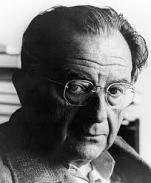 |
The point to make here, though, is that from its early days, Freud and the others knew this was bigger than just therapy! It dealt with our vision of who we are as people, and most of the culture still hasn’t caught up with the idea that much of our behavior is driven by unconscious and irrational forces—and many of these have little to do with how we are raised in our family. I’ll say more about this later, but the other point is that a good deal of depth psychology noted that some of our patterns are cultural, collective. For example, the whole idea of having, possessing, getting, greed—all these are big in the news today, and they may be said to be prominent in the culture. Yet they go against another potential, which is letting go, not being greedy, resisting acquisitiveness and property and the one with the most stuff when he dies wins. Erich Fromm (picture to right) looked at this deep tendency not as a neurosis of the individual, but as a tendency in the culture that we might want to learn to revise.
Can consciousness evolve? What if that question involves re-thinking major norms. We’ve done it with the status of women, of slavery. We’re beginning to do it with drunkenness, racism—and how about age-ism? Can we begin to discipline and contain our more childish urges? Of course we can—but what will it take to bring this fully into education?
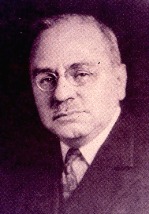 |
I include Alfred Adler (left, in 1937, just before his death) because although some of his work was on child guidance and he was the one who introduced the idea of the inferiority complex, I think Adler’s main gift to the culture has not been recognized: There is an alternative to the competitive, one-upmanship ethos that pervades the culture: It is community feeling, being a “we,” having a feel for this us-ness. Adler had a big ol’ German word, Gemeinschaefts-gefuehl, a gefuehl or feel for the social togetherness, the Gemeinschaefts. Get in there and help us do our thing, rather than try to prove to yourself and us how superior you are.
I’ve thought about this and my hunch is that Adler alone has articulated a positive goal for happiness, well-being, and whatever it was that Jesus was really preaching. Love is such a sentimentalized term. Get involved and help us make this a better world, a nicer world, if only with the practice of smiling and saying thank you. We’ll revisit this idea again later when we talk about positive psychology—some new trends since the 1990s.
Humanistic Psychology
My point is to let you know that psychology has been full of visionaries who are hardly appreciated. Another group of these folks are pioneers and thousands of practitioners of what was called humanistic psychology. It was humanistic in the sense that it focused on what humans could do that little kids and rats and dogs and monkeys couldn’t do.Early on, psychology was trying to build up its scientific foundations in a reductionistic fashion, by isolating and understanding some fairly basic phenomena, such as reflexes, and how animals run mazes in puzzles. Can you condition chickens to behave in certain ways. All well and good, but just a beginning, far from the end.
(One practical impact: In the 1920s one scientist authority claimed to know that it was bad to spoil children, they should be conditioned to adapt to the modern world. For about 20 years your mothers were afraid to pick you up and cuddle you. The famous Benjamin Spock’s book at the end of WW2 was permissive only insofar as its trying to counter this now widely recognized as mistaken and tragically harshly stringent rule.
That same stiff-upper-lip spirit that sought to stifle vulnerability was becoming criticized by intellectuals in many fields as having contributed to the madness of the first world war. This gave a boost to the gradual emergence of psychoanalysis. Psychology.
Freud, bless his heart, also opened a number of doors. But then he fell prey to the seduction of creating a theory, as if it were a done deal, a closed box, an orthodoxy. I hear one of my ideals, the philosopher Alfred North Whitehead, saying, “All truths are half truths: It’s treating them as if they were whole truths that plays the devil.” So I credit Freud with opening a number of very fruitful lines for further investigation, and I blame him a bit for not encouraging others, like Jung and Adler, for building on his ideas but going way beyond Freud in certain ways. So by the 1940s, psychoanalysis was a bit too frozen in its theories of how the mind work, tracing too much to early childhood experience. But it had become prominent in psychology and psychiatry, a second force to balance the earlier behaviorists.
So, if Behaviorism was the first force, and Psychoanalysis was the second force in American Psychology, then Humanistic psychology became a third force: It sought to explore beyond childhood and rats and ask questions about the higher abilities of creativity, philosophy of life, meaning making, kindness, self-discipline, and so forth.
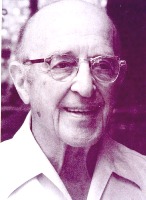 |
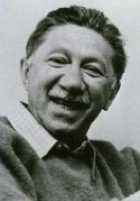 |
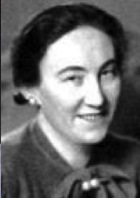 |
| Carl Rogers |
Abraham Maslow |
Charlotte Buhler |
Some of its pioneers included Abraham Maslow, Carl Rogers, Rollo May, Charlotte Buhler, Victor Frankl, and so forth.(Some of their photos to the right). I’ll note especially the work of Abraham Maslow as a visionary. He died in 1970, but was able to promote a number of far reaching ideas.
One of the most far-reaching ideas is that having accepted the Freudian to some degree—namely that if people don’t feel safe, secure, loved, belonging—and the Adlerian ideas of needing some sense of competence and self-esteem—for a more affluent culture such as America at mid-century, well, a whole bunch of other needs come bubbling up.
Sure, we want richness, but many of us find we need to balance that with simplicity.
Sure, we want self-sufficiency, but many of us are finding that at this point of life the question of what makes life feel meaningful becomes more important. And so forth.
What are these qualities about? How do they work? This is what humanistic psychology is about, and Maslow and the others asked some important questions that aren’t talked about half enough because psychology was buried under the blankets of psychotherapy for the neurotic. But Humanistic Psychology was talking about what healthy, normal people need in order to help themselves and our culture become even healthier.
There are a lot of forces chipping away at the feeling of life as meaningful, of efforts as worthy versus commercial and cheap. A bit of idealism is needed, and you can talk about these things with your kids and grandkids, because the culture is selling them not just crap, but a deeper message: It’s all crap so grab what you can while you can and cheating isn’t that bad in such a context. My friends, this is evil. It’s not as dramatically evil as murder and rape and such, but mild evil in its aggregate weighs us all down more than the occasional egregious actions of evildoers.
My Own Journey
I was very fortunate in being in the right place at the right time, entering the field of psychiatry where and when it was most wonderfully blossoming. Parts of the field were still back twenty years, a little more advanced than the dark ages of the snake pit, the 1940s when psychiatric patients were warehoused in giant state hospitals—the field had moved on with the help of thorazine and more advanced drugs—but still not great. But where I was at Stanford University Medical School’s Department of Psychiatry, there were lots of great advances being explored and I picked up on that enthusiasm.Some of the advances that were up at that time, in the mid-1960s:
- humanistic psychology was growing and there was also the beginnings of transpersonal psychology (or the place of spirituality in psychology and psychotherapy)
- the “human potential movement” was gearing up, bringing together a variety of group methods, imagination development, body awareness and body therapies, psychodrama, and so forth—as exemplified especially by the Esalen Institute growth center about 100 miles south on the California coast.
- the cultural explosion that included hippies, psychedelic art, the Beatles and innovations in music, the influx of various esoteric spiritual ideas from East and West, and so forth
- family therapy and the broadening of the awareness of who is involved in healing, along with new ideas about what communications and types of therapy are about
- other types of therapy were being developed and talked about: Gestalt therapy, Psychosynthesis, Transactional Analysis, Bioenergetic Analysis, and so forth—and there were teachers of these approaches (if not the founders) right there in the greater San Francisco Bay Area!
- neuroscience was being explored, along with basic principles of cybernetics, feedback, and how communications within the nervous system and between people really work
- dream and sleep research was making advances
- advances in bonding and attachment and other forms of fundamental research were being explored
- community psychiatry and many other experiments in how to do therapy, half-way houses, day treatment, and so forth were still frontiers... and so forth.
Frankly, I really think the greater San Francisco Bay Area between 1960 and 2000 and perhaps even after that was somewhat comparable to the city states around Florence, Italy five hundred years earlier in the early Renaissance! The excitement and sense of what might be was palpable and I confess that I’ve never lost that sense of what we may yet become!
Jacob L. Moreno, M.D. (1889-1974)
When I was in training, I liked psychodynamic ideas, but did not like the psychoanalytic method, which was too stifling and dour. I discovered psychodrama, which offered a powerful alternative. It allowed for a deep understanding of the nature of the mind—in some ways, deeper, because it included the social psychological dimensions—, but also employed therapeutic role playing as a way to engage the process of exploration and development.Insight was a limited part of the goal; equally important was creativity, the sense that one could figure out how to employ whatever insights were gained in some effective ways. I fear that I cannot begin to express in this short space all the reasons why I liked psychodrama, other than to say the more I studied it the more I found to admire.
Moreno himself was a very mixed character. A fiery man in love with his own vision, he tried to balance it by giving it away. He knew he was a genius, but then he said that we’re all geniuses to the extent that we open to our creativity and spontaneity. I’ve found that most people are hardly open to these channels, but after many years, I think he’s right that we all have the potential to tap into what I call the “axis of inspiration,” the capacity to enhance our creativity.
Relating to the theme of can consciousness evolve, I envision a time that most people can develop their capacity for spontaneity and improvisation, and their capacity for creative thinking far more than what happens in the standard school system. Not only would Moreno support this, but some of the visionaries I’ll talk about next week in the realms of education.
I discovered that just as Freud practiced analysis to make money but really wanted to just think about and explore the mind, so too did Moreno do psychodrama, but his vision went way beyond the applications of improvised drama and self-expression in therapy per se. Moreno did have a broad vision—the underlying theme being how we can promote creativity:
– therapeutic role playing in psychodrama or sociodrama is a kind of laboratory for explorations and experiments in the psycho-social realm
– group dynamics and a more interactional form of group therapy fostered people helping people without anyone having to be “the” teacher or therapist (and in this Moreno became one of the pioneers of group psychotherapy in the early 1940s)
– role theory was a user-friendly language for integrating individual and social psychology, and had many other benefits—and Moreno was a pioneer of the use of this concept
– exploring the way people chose people, had preferences, and the complexities of this interpersonal and group choice process deserved further explication (i.e., “sociometry”)
– promoting the exploration of ways to develop creativity in education, business, etc. (an idea that has become far more prominent more recently)
– supporting the use of all kinds of modalities, the various arts therapies, technologies, and so forth to expand creativity, therapy, etc.
– theoretician who noted the human tendency to rely on what has been created and give authority to people who created in the past rather than take the risk of owning their own improvisational and creative processes
– ...and even theologian who saw in creativity the action of God or the Cosmos—an idea that he picked up from Henri Bergson around 1905. His work might be viewed as seeking to operationalize this sensibility. His work also is consonant with some of the ideas of Whitehead, though I have no reason to think that Moreno ever made that connection.
What excites me—and a theme I make about this whole process—is that psychology is entering the mainstream; it is being applied in many contexts in business and people-helping in general, quite beyond the business of therapy for those in the sick role. Police are using it, managers, students who are wanting to understand an event in history, and on and on. It’s a method for exploring together that’s far more lively and develops more empathy than mere “discussion.”
But if Moreno was so great, how come he wasn’t better known? Well, he had a number of tragic faults that operated against his sustaining his allies. He tended to be peremptory and entitled and made enemies faster than he made friends. His writing style was a bit chaotic: He was so excited about his ideas that he didn’t bother to spell out details, be consistent in definitions, and build an easy-to-learn “system.” (I’ve attempted to rectify these lacks.) But in terms of role theory, each of us can be great in a few ways, pretty good in some ways, pretty much the same as most people in a lot of ways, and not so hot in some ways, too. Even great men like Mozart or Beethoven had their foibles. Anyway, even knowing this, I’ve attempted to re-present the best ideas in the most readable fashion in a variety of books and many papers.
Transpersonal Psychology
To return to the evolution of humanistic psychology. And Moreno had a tiny input here too, though it was generally not noticed. Can spirituality be part of psychiatry or psychotherapy? At the time, intellectuals and psychiatry in particular were rather wary of religion. But there are two aspects of religion—one is the tradition, which in the past had become infused with not only self-righteousness, but overlapped into political power. We’re still fighting those frontiers today. And many people who sought psychiatric help were clearly burdened by fears of hell and many other side effects of fundamentalism.On the other hand, by the 1960s, and with the help of the influx of spiritual teachers from East and South Asia after the immigration laws were changed, more people were asking if there might be more to religion than harsh traditionalism. What about spirituality, mysticism, the quest?
The fact that this was also an era in which alienation was becoming recognized as a pervasive condition, that plays like Waiting for Godot and theological themes like The Death of God were in the culture. So looking for meaning, for more-ness, for something, was also becoming a lively cultural theme.
Can spirituality be talked about as part of psychotherapy. Some thought that it needed to be. It wasn’t just permitted, but it was part of the diagnosis and treatment. The problem is that it’s a little different for each person. People have to put together what works for them. I’ll touch on this more in the last lecture, but suffice it to say that the theme became a lively one and has continued to make inroads so that I would say that by 1995, many if not most conferences on aspects of psychotherapy deal with spirituality.
I’ve given workshops on how psychodramatic methods can help in this exploration—and will be doing so again about a week after the last lecture, at a conference of drama therapists in San Francisco.
Development of Fields of Psychotherapy
The 1960s through the present has seen the proliferation of scores of different types of therapies, and if you include variation, hundreds. To the extent that one claimed to be right and the others wrong—part of the ethos in the mid-20th century and as fallacious as the blind men and the elephant I spoke about earlier. On the other hand, to the degree that they put their heads together and say “yes, and,” this is exciting and positive. There are a lot of ways people can be turned on to experiencing their wholeness.A related tendency was the expansion of psychotherapy-like activities into helping normal people flourish. This was part of the aforementioned human potential movement. I’d like to see a lot of this become part of mainstream education. People need to learn not to behave like jerks even more than they need to learn calculus—and that’s my private opinion.
So, to say again: eclecticism was a term that meant that one takes some of this approach and some of that. It was looked down upon in the 1960s, but by the 1990s, most therapists were eclectic and proud of it. Of course it can be done foolishly and superficially, but then again, so can devotion to only one approach, so I betray my prejudices by advocating an intelligent eclecticism.
Positive Psychology
Starting in the 1990s, pioneered by Martin Seligman, and soon joined by many others, one of the more heartening developments in psychology has been what is known as “positive psychology.” I see this as an extension of humanistic psychology and also of Moreno’s approach, but I also credit Seligman for doing good research establishing it.Said simply, getting rid of the weeds works best if you can plant and cultivate healthy plants in their place. Correcting faults needs to be balanced with building on strengths. So this is a good corrective. It also synthesizes the so-called “positive thinking” approach of Norman Vincent Peale that was popular in the mid-20th century, and also some of the principles of Alcoholic Anonymous and the “Twelve Step” approach.
I don’t doubt that any approach can be used shallowly and foolishly. The aforementioned Abe Maslow was said to have commented that people who only know how to use a hammer have a tendency to treat everything as if it were a nail. So I support having a broad repertoire of ways to help people and to find out what is indicated and what works for each individual. One size does not fit all.